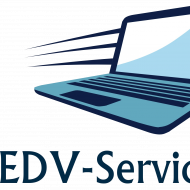Software developers use this as a guide to ensure software is produced with the lowest cost and highest possible quality in the shortest amount of time. At Intellectsoft, we know how important an effective what is systems development life cycle project management strategy is. Our developers and specialists have a track record of building innovative software solutions that perfectly fit our clients’ business goals and requirements.

In short, this phase consists of collecting and interpreting facts, diagnosing issues, and proposing improvements for the system. It is vital to have as diverse a team as possible during this phase. If more people who know and use the system are present, the greater the chances are of finding valuable improvement points. The first phase is the evaluation of the existing, or current, system. This is where shortcomings are officially determined by a system analyst. These shortcomings were probably already present, so a good way to find out about them is interviewing support staff.
Object-oriented analysis and design
They’ll typically turn the SRS document they created into a more logical structure that can later be implemented in a programming language. Operation, training, and maintenance plans will all be drawn up so that developers know what they need to do throughout every stage of the cycle moving forward. Perhaps most importantly, the planning stage sets the project schedule, which can be of key importance if development is for a commercial product that must be sent to market by a certain time. Before we even begin with the planning stage, the best tip we can give you is to take time and acquire proper understanding of app development life cycle.
This phase often requires extensive programming skills and knowledge of databases. The team will build functionality for the product or service, which includes creating a user interface and building the database so users can store information in your system. The software development life cycle (SDLC) is the process of planning, writing, modifying, and maintaining software. Developers use the methodology as they design and write modern software for computers, cloud deployment, mobile phones, video games, and more. Adhering to the SDLC methodology helps to optimize the final outcome. SDLC is also an abbreviation for Synchronous Data Link Control and software development life cycle.
Spiral Model
However, there is little room for change once a phase is considered complete, as changes can affect the software’s delivery time, cost, and quality. Therefore, the model is most suitable for small software development projects, where tasks are easy to arrange and manage and requirements can be pre-defined accurately. It’s when you gather the team to brainstorm, set goals, and identify risks.
The reason the above stages are referred to as a cycle is because these stages are repeated each time a new major version of the software is released. While the maintenance stage may encompass minor updates, most software companies stay in business by regularly releasing paid updates (version 2, version 3, etc). Before embarking on a new major version, the development team must first create a plan (stage 1) and then continue through the other stages of the SDLC. The NIST SDLC integrates risk management activities through the application of the NIST RMF. In the information systems domain, the terms SDLC and system life cycle are often used interchangeably. It has been suggested that information SDLC should not be confused with system (the delivered product) life cycle.
How to Choose a Software Development Company: Fundamental Do’s and Don’ts
Developers clearly know the goals they need to meet and the deliverables they must achieve by a set timeline, lowering the risk of time and resources being wasted. Their output may be closer or farther from what the client eventually realizes they desire. It’s mostly used for smaller projects and experimental life cycles designed to inform other projects in the same company.
- Different modules or designs will be integrated into the primary source code through developer efforts, usually by leveraging training environments to detect further errors or defects.
- This step involves decomposing the system into pieces, analyzing project goals, breaking down what needs to be created, and engaging users to define requirements.
- Those who undertake testing should be made aware of the need to observe confidentiality of the information used in the testing process.
- A testing environment that simulates the actual use of the system should be used.
- It can be applied to networks and online services, but is most often used in software development.
Conducting a feasibility study and performing a SWOT (strengths, weaknesses, opportunities, and threats) analysis are important tools to be used in this stage. The Agile model has existed for a long time, and still hasn’t lost its punch. Lately, the model is widely adopted by organisations, and it is proven to be quite the driving force behind software development. Some companies see so much value in the model that it is used for other projects, including non-technical projects and activities. The conceptual design stage is the stage where an identified need is examined, requirements for potential solutions are defined, potential solutions are evaluated, and a system specification is developed.
Benefits and drawbacks of SDLC
Now it must be tested to make sure that there aren’t any bugs and that the end-user experience will not negatively be affected at any point. Developers will follow any coding guidelines as defined by the organization and utilize different tools such as compilers, debuggers, and interpreters. Comments about specific definitions should be sent to the authors of the linked Source publication. For NIST publications, an email is usually found within the document. Tutorials Point is a leading Ed Tech company striving to provide the best learning material on technical and non-technical subjects.

By building the system in short iterations; we can guarantee meeting the customer’s requirements before we build the whole system. ALM includes the entire lifecycle of the application and continues beyond SDLC. The document sets expectations and defines common goals that aid in project planning.
Quality management and System Development Life Cycle
Additional specifications can be introduced as the development process is repeated, producing new versions of the system at the end of each iteration. In the maintenance phase, among other tasks, the team fixes bugs, resolves customer issues, and manages software changes. In addition, the team monitors overall system performance, security, and user experience to identify new ways to improve the existing software. In the implementation phase, the development team codes the product.
SDLC provides a number of advantages to development teams that implement it correctly. The agile methodology prioritizes fast and ongoing release cycles, utilizing small but incremental changes between releases. This results in more iterations and many more tests compared to other models.
Systems development lifecycle
This helps to estimate costs, benefits, resource requirements, and specific user needs. An output artifact does not need to be completely defined to serve as input of object-oriented design; analysis and design may occur in parallel. In practice the results of one activity can feed the other in an iterative process. This may involve training users, deploying hardware, and loading information from the prior system. At this step, desired features and operations are detailed, including screen layouts, business rules, process diagrams, pseudocode, and other deliverables. Around seven or eight steps appear commonly; however, there can be anywhere from five upwards to 12.
Once the system is deployed within the agency, ongoing operations and maintenance will occur that are led by agency IT staff along program leads. Periodic review of system function should occur to ensure that the system performs as designed and system updates are identified. All changes to a system must be formally controlled via the Forensic Laboratory change control process, as defined in Chapter 7, Section 7.4.3. The Information Security Manager must ensure that the required security features are included in the system.
The systems development life cycle (SDLC) was the primary conceptual basis for planning in this era. The SDLC for information systems evolved from the basic life cycle notion for complex systems. The classic SDLC for a single system is shown in the central portion of Fig.
